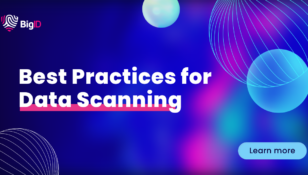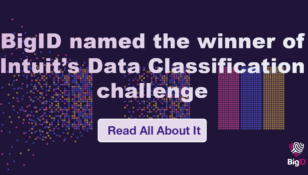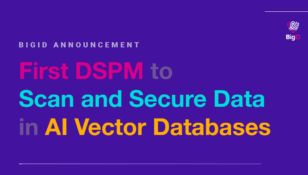Data Types Demystified: Structured vs Unstructured Data
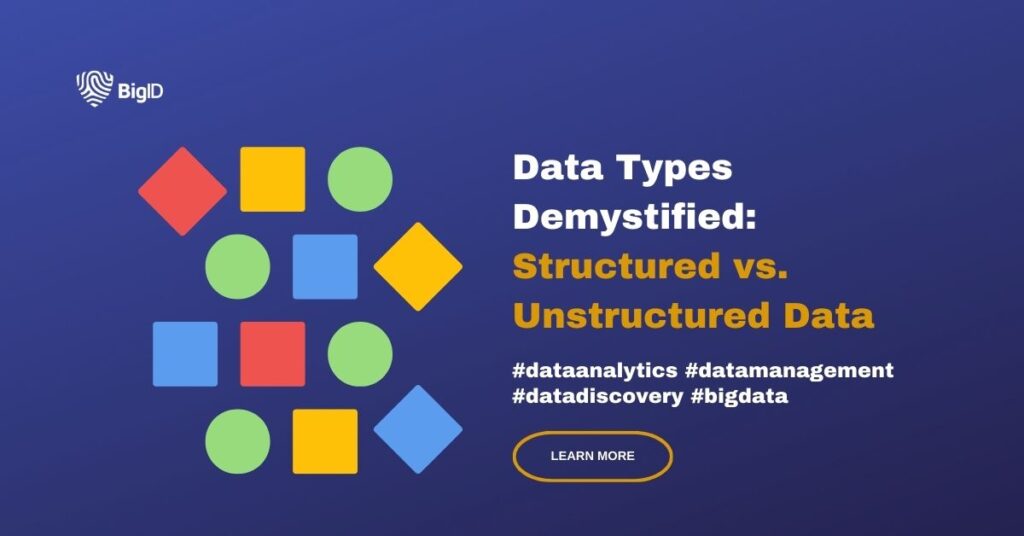
Structured vs. Unstructured Data: Unraveling the Differences and Maximizing Value
In the digital age, data is more than just a buzzword—it’s the lifeblood of modern organizations. But not all data is created equal. Understanding the distinctions between structured vs. unstructured data can significantly impact how you manage, analyze, and leverage information. In this article, we’ll explore these two types of data, their respective challenges, and best practices for using them while safeguarding privacy and adhering to governance regulations.
What Is Structured Data?
Structured Data refers to information that is organized in a predefined manner, typically within rows and columns in databases or spreadsheets. This data is highly organized and easily searchable using straightforward algorithms. It’s the data that fits neatly into a table or spreadsheet, making it a favorite for relational databases.
Common Types of Structured Data
- Databases (e.g., SQL databases)
- Spreadsheets (e.g., Excel files)
- Customer Relationship Management (CRM) Systems
- Enterprise Resource Planning (ERP) Systems
Structured Data Use Case
A retail company might use structured data to track inventory levels, sales figures, and customer orders. Each transaction is recorded in a database with clearly defined fields such as product ID, quantity, and price. This structured format allows for efficient querying, reporting, and analysis.
What Is Unstructured Data?
Unstructured Data, on the other hand, is not organized in a predefined manner and does not fit neatly into tables or spreadsheets. This type of data is often textual but can also include multimedia elements. Unstructured data is more challenging to analyze and process due to its irregular format.
Common Types of Unstructured Data
- Emails and text messages
- Social media posts and comments
- Documents (e.g., PDFs, Word files)
- Multimedia (e.g., images, videos, audio recordings)
Unstructured Data Use Case
A marketing team analyzing customer feedback on social media might deal with unstructured data. Comments, reviews, and tweets are varied in content and format, requiring advanced text analysis techniques to extract meaningful insights and sentiments.
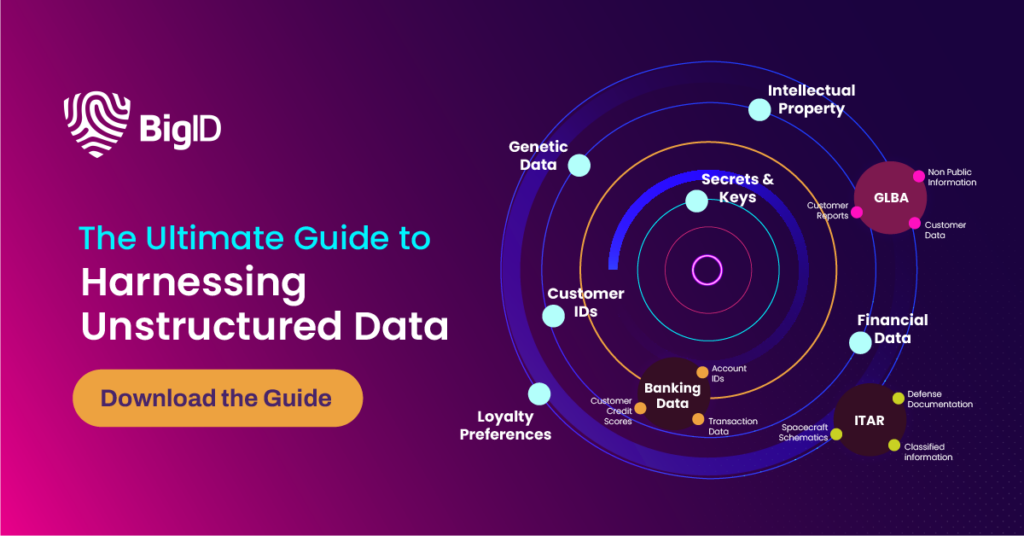
Challenges in Data Discovery and Classification
Structured Data
- Data Volume: As the volume grows, managing and maintaining database performance can become challenging.
- Integration: Integrating data from multiple structured sources can be complex and may require advanced ETL (Extract, Transform, Load) processes.
Unstructured Data
- Complexity: Analyzing and extracting useful information from unstructured data is complex due to its variability and lack of organization.
- Storage: Managing the storage of large volumes of unstructured data can be resource-intensive.
- Data Discovery: Identifying relevant data within large unstructured datasets requires sophisticated search and indexing technologies.
Security, Privacy, and Governance
Both structured and unstructured data can be vulnerable if not handled properly. Mishandling can lead to data breaches, loss of privacy, and non-compliance with regulations. Here’s how organizations can mitigate these risks:
Data Security and Privacy Laws
- General Data Protection Regulation (GDPR): Applies to data about individuals in the European Union, mandating stringent data protection and privacy measures.
- California Consumer Privacy Act (CCPA): Grants California residents the right to access, delete, and opt out of the sale of their personal data.
- Health Insurance Portability and Accountability Act (HIPAA): Regulates the handling of personal health information in the U.S.
Best Practices for Managing Structured and Unstructured Data
- Data Encryption: Encrypt sensitive data both in transit and at rest to protect it from unauthorized access.
- Access Controls: Implement robust access controls to ensure that only authorized personnel can access sensitive data.
- Data Classification: Use automated tools to classify data based on its sensitivity and importance, applying appropriate security measures accordingly.
- Regular Audits: Conduct regular security audits and assessments to identify vulnerabilities and ensure compliance with regulations.
Pros and Cons of Structured and Unstructured Data
Understanding the strengths and weaknesses of both structured and unstructured data is crucial for making informed decisions about data management and analytics.
Pros of Structured Data
- Ease of Management: Structured data is highly organized, making it straightforward to enter, store, and retrieve. It’s easily managed using traditional database systems.
- Efficient Querying: With predefined schemas, structured data allows for quick and efficient querying using SQL, enabling fast data retrieval and reporting.
- Consistency: The rigid format ensures that data is consistent and adheres to defined standards, reducing errors and discrepancies.
- Automation: Processes such as data entry, validation, and reporting can be easily automated, enhancing productivity.
Cons of Structured Data
- Limited Flexibility: Structured data is less adaptable to changes in data requirements or formats, which can be restrictive in dynamic environments.
- Scalability Issues: As data volume grows, maintaining performance and scalability can become challenging without proper database management practices.
- Integration Complexity: Integrating structured data from disparate sources often requires complex ETL processes and data warehousing solutions.
Pros of Unstructured Data
- Richness of Information: Unstructured data often contains a wealth of insights and context that structured data may lack, such as sentiment in customer reviews or nuances in social media posts.
- Flexibility: This data type can easily accommodate various formats and types, allowing for the collection of diverse information sources.
- Advanced Analytics: Modern technologies like AI and NLP can uncover patterns and insights from unstructured data that may not be evident through traditional analysis methods.
Cons of Unstructured Data
- Complex Analysis: Analyzing unstructured data is more complex and requires advanced tools and techniques to extract valuable insights.
- Storage and Management: Storing and managing unstructured data can be resource-intensive, necessitating robust storage solutions and indexing mechanisms.
- Data Quality: Unstructured data can be noisy and inconsistent, making it challenging to ensure data quality and reliability.
Structured vs. Unstructured Data in Hybrid Environments: On-Premises vs. Cloud
Hybrid Environments combine on-premises infrastructure with cloud solutions, offering flexibility and scalability. Both structured and unstructured data play significant roles in these environments, each with its own considerations.
Structured Data in Hybrid Environments
Pros of On-Premise Structured Data
- Control: Organizations have complete control over their data and infrastructure, allowing for customized optimization and security measures.
- Compliance: Easier to ensure compliance with data regulations by keeping sensitive data within controlled, on-premises systems.
Cons of On-Premise Structured Data
- Scalability: Scaling on-premises infrastructure can be costly and complex, particularly for growing data volumes.
- Maintenance: Requires ongoing maintenance and upgrades to hardware and software.
Pros of Structured Data in the Cloud
- Scalability: Cloud solutions offer scalable storage and computing power, accommodating fluctuating data needs.
- Cost-Efficiency: Pay-as-you-go models can reduce upfront costs and enable more flexible budgeting.
Cons of Structured Data in the Cloud
- Data Security: Ensuring data security and compliance in the cloud requires robust measures and adherence to best practices.
- Integration: Integrating cloud-based structured data with on-premises systems can be complex and may require sophisticated tools and strategies.
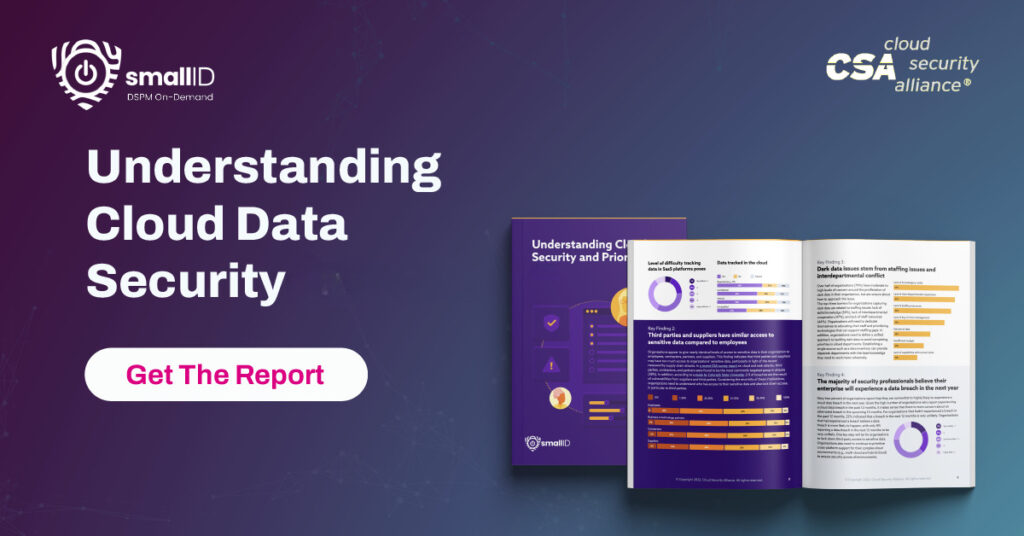
Unstructured Data in Hybrid Environments
Pros of On-Premise Unstructured Data
- Data Sovereignty: Provides control over data security and privacy, crucial for handling sensitive or proprietary information.
- Custom Solutions: Allows for the development of custom solutions tailored to specific data processing needs.
Cons of On-Premise Unstructured Data
- Resource Intensive: Managing and analyzing large volumes of unstructured data on-premises can be resource-intensive and costly.
- Limited Flexibility: Scaling up on-premises infrastructure to accommodate unstructured data growth can be challenging.
Pros of Unstructured Data in the Cloud
- Advanced Tools: Cloud platforms offer access to advanced analytics tools and technologies for processing unstructured data, such as AI and big data frameworks.
- Flexibility: The cloud provides flexibility to scale storage and compute resources as needed, supporting diverse unstructured data types.
Cons of Unstructured Data in the Cloud
- Compliance Challenges: Ensuring compliance with data regulations, particularly for sensitive unstructured data, requires careful management and adherence to security practices.
- Latency: Data transfer to and from the cloud can introduce latency, which may affect real-time analytics and processing.
The Future of Data: Maximizing Value without Compromising Privacy and Security
As the digital landscape evolves, the volume and variety of data continue to grow exponentially. To stay competitive, organizations must harness the power of both structured and unstructured data. However, doing so effectively requires balancing data utility with stringent privacy and security measures. Let’s explore the future of data management and how organizations can maximize their data’s value while safeguarding it.
Future Trends in Data Management
Increased Use of AI and Machine Learning
AI and machine learning are revolutionizing how organizations process and analyze both structured and unstructured data. These technologies enable automated data classification, anomaly detection, and predictive analytics, making it easier to extract actionable insights from large datasets.
Example of AI & Machine Learning
Companies like Google and Amazon use AI to analyze vast amounts of customer data to personalize experiences and improve services. According to a report by McKinsey, organizations that leverage AI in their operations can achieve up to 20% more efficient decision-making processes .
Data Fabric and Integration Platforms
Data fabric architecture provides a unified data management framework, allowing seamless integration of data across hybrid environments. This approach supports real-time data processing and enhances data accessibility.
Data Fabric Example
IBM’s Data Fabric solutions enable businesses to connect data silos, ensuring a consistent and secure data flow across cloud and on-premises systems. This integration is crucial for creating a holistic view of enterprise data .
Enhanced Data Privacy and Security Measures
With increasing regulatory scrutiny, organizations are prioritizing data privacy and security. Technologies such as homomorphic encryption, differential privacy, and secure multi-party computation are emerging to protect data during processing and analysis.
Example of Increased Privacy and Security
Apple implements differential privacy techniques to gather user data while obscuring individual identities, ensuring compliance with privacy regulations like GDPR and CCPA .
Edge Computing
Edge computing brings computation and data storage closer to the data sources, reducing latency and improving data processing efficiency. This trend is particularly beneficial for real-time analytics and IoT applications.
Edge Computing Example
Manufacturing companies use edge computing to process data from IoT devices on the factory floor, enabling real-time monitoring and predictive maintenance without the need to transfer large data volumes to centralized cloud servers.
Strategies for Maximizing Data Value
Implement Robust Data Governance
Effective data governance frameworks ensure data quality, consistency, and security. Organizations should establish clear policies and procedures for data management, including roles and responsibilities, data standards, and compliance requirements.
Data Governance Example
A financial institution can implement a data governance program to ensure compliance with regulations such as the GDPR and CCPA, protecting sensitive customer information while maintaining data accuracy and accessibility.
Adopt Privacy-Enhancing Technologies
Privacy-enhancing technologies (PETs) such as data anonymization, encryption, and secure data sharing protocols help organizations protect sensitive information while enabling data use for analytics.
Privacy Technology Example
Health Tech companies use PETs to share patient data for research without compromising patient privacy. Homomorphic encryption allows computations on encrypted data, providing insights without exposing raw data .
Leverage Cloud-Native Data Analytics
Cloud-native data analytics platforms offer scalable and flexible solutions for processing large datasets. These platforms provide advanced analytics capabilities, including real-time processing and AI integration, ensuring efficient data utilization.
Example of Cloud-Native Analytics
Netflix uses cloud-native analytics to process and analyze viewer data, optimizing content recommendations and improving user experience. This approach has contributed to their growth, with over 200 million subscribers globally .
Foster a Data-Driven Culture
Cultivating a data-driven culture within the organization encourages data literacy and promotes informed decision-making. Providing training and resources to employees ensures they can effectively utilize data insights in their roles.
Example of a Data-Driven Culture
Companies like General Electric (GE) invest in data literacy programs, empowering employees to leverage data analytics in their daily operations. This cultural shift has driven innovation and operational efficiency across the organization.
The future of data management lies in the intelligent integration and analysis of both structured and unstructured data. By embracing advanced technologies and implementing robust governance and privacy measures, organizations can maximize their data’s value without compromising security. Staying ahead in this data-driven era requires a strategic approach that balances innovation with stringent data protection practices.
How BigID Streamlines Structured and Unstructured Data
Both structured and unstructured data have their unique advantages and challenges. Structured data’s organized nature makes it easier to manage and analyze, while unstructured data’s richness offers deeper insights but requires more sophisticated processing techniques. BigID is the leading platform for data privacy, security, compliance, and AI data management using deep data discovery and advanced AI for greater visibility into all your enterprise data.
WIth BigID organizations can:
- Identify All Data: Discover and classify data to build an inventory, map data flows, and gain visibility on all personal and sensitive information.
- Minimize Data: Apply data minimization practices by identifying, categorizing, and deleting unnecessary or excessive personal data to efficiently manage the data lifecycle.
- Implement Data Protection Controls: Automate data protection controls to enforce data access and other security measures, which are crucial to safeguarding data and complying with various regulations.
- Assess Risk: Automate privacy impact assessments, data inventory reports, and remediation workflows to identify and remediate risks to maintain compliance.
You can’t protect what you don’t know. To make sure you can automatically find dark, shadow, and unstructured data at scale— book a 1:1 demo with our experts today.



